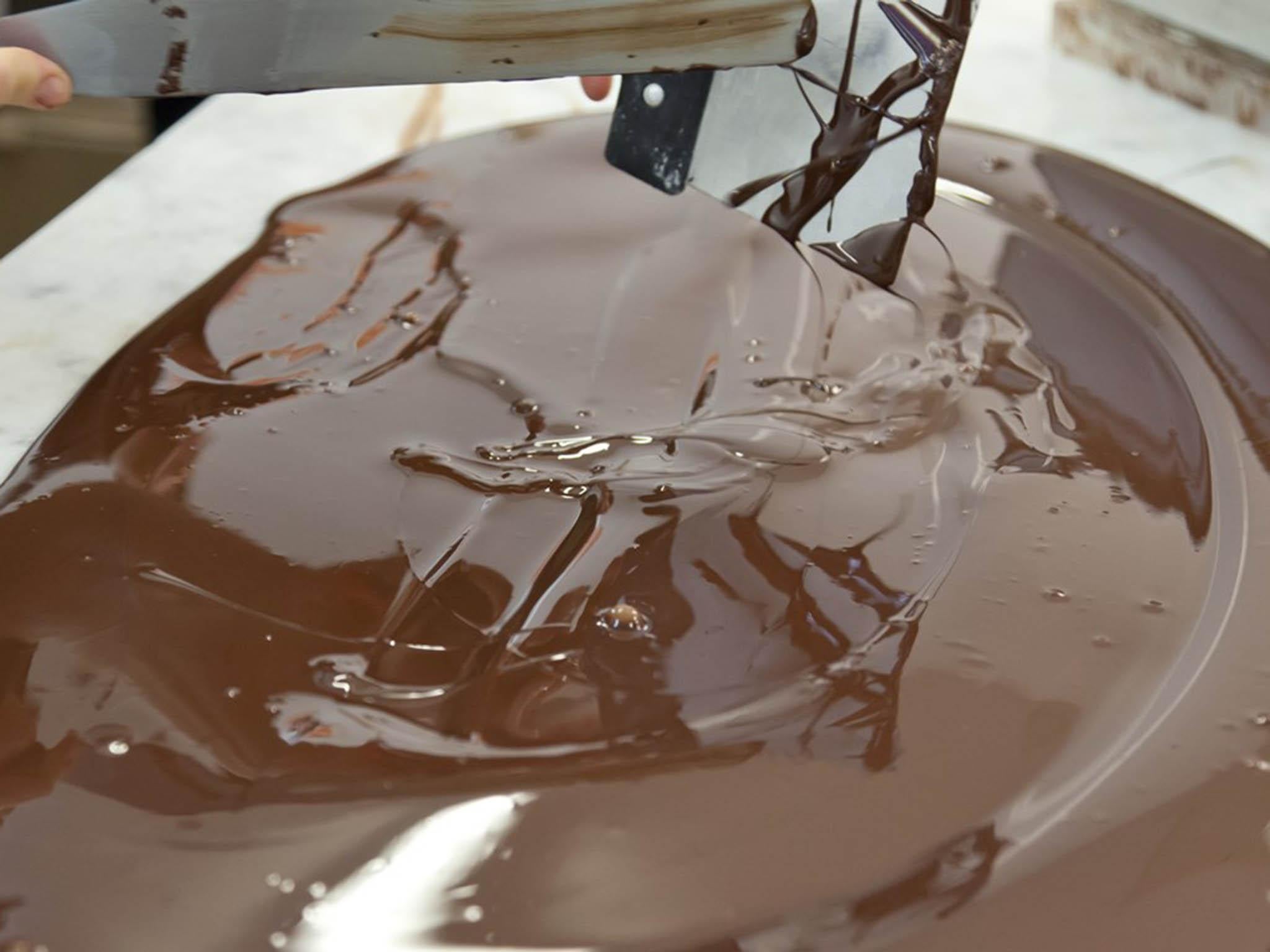Easter 2018: How to temper chocolate to make your own Easter eggs
The DIY version of a chocolate Easter egg might be timely, but it adds another string to your culinary bow, and will be even more satisfying to eat then one you've bought

Your support helps us to tell the story
From reproductive rights to climate change to Big Tech, The Independent is on the ground when the story is developing. Whether it's investigating the financials of Elon Musk's pro-Trump PAC or producing our latest documentary, 'The A Word', which shines a light on the American women fighting for reproductive rights, we know how important it is to parse out the facts from the messaging.
At such a critical moment in US history, we need reporters on the ground. Your donation allows us to keep sending journalists to speak to both sides of the story.
The Independent is trusted by Americans across the entire political spectrum. And unlike many other quality news outlets, we choose not to lock Americans out of our reporting and analysis with paywalls. We believe quality journalism should be available to everyone, paid for by those who can afford it.
Your support makes all the difference.Tempering chocolate is an advanced technique that requires skill, concentration and a good thermometer. It involves slowly heating and then slowly cooling the chocolate so that the fats crystallise uniformly and the chocolate ‘snaps’ rather than crumbles when broken.
Tempered chocolate is often used to coat truffles to provide a smooth, polished finish. It also has the advantage of having a higher melting point which is useful for when the chocolate is being handled.
Method
There are two main methods for tempering chocolate. For both methods, you will need a thermometer and good quality chocolate with a high cocoa content.
Use the traditional method when tempering over 1kg of chocolate. When it comes to tempering chocolate, the slower you melt the chocolate, the better the result will be, so take your time.
The traditional marble slab method
Bring a pan of water to a simmer and then remove from the heat. Break the chocolate up into small chunks and place in a bowl. Set the bowl over the pan to make a bain-marie, ensuring the bottom does not come into direct contact with the water. Let the chocolate gradually melt to 55°C for dark chocolate and 50°C for milk and white, stirring slowly and continuously.
Remove from heat and pour three-quarters of the melted chocolate on to a cool marble slab, leaving the rest of the chocolate in the bain-marie. Work the chocolate across the surface using a palette knife until it reaches 27°C.
Return the chocolate to the bowl and stir well to incorporate all of the cooled chocolate with the remaining chocolate in the bowl. The temperature should read 31˚C – if the chocolate is hotter than 32˚C you will need to repeat the process again; if it is cooler then heat up to exactly 31˚C. For milk chocolate the temperature is 29˚C and for white it is 28˚C.
The seeding method
Bring a pan of water to a simmer and then remove from the heat. Break the chocolate up into small chunks and add three-quarters to a bowl. Set the bowl over the pan to make a bain-marie, ensuring the bottom does not come into direct contact with the water. Let the chocolate gradually melt to 55°C, stirring slowly and continuously.
Remove from the heat and add the remaining chocolate pieces. Slowly stir the chocolate until it melts and reaches 27–28°C.
Place the bowl of chocolate back over the pan of water and set over a low heat. Reheat to 31–32°C, making sure the chocolate does not exceed 32°C.
Tips
Tempered chocolate solidifies quickly as it cools so it is important to maintain its temperature in the time between tempering and using the chocolate. Ideally, keep a bain-marie ready and as soon as it starts to cool, briefly reheat to keep the temperature steady. If the temperature gets too high or low, it will lose its tempered properties and will need to be tempered again.
When chocolate hasn’t been tempered properly, the cocoa fat rises to the surface and ‘blooms’. Poorly tempered chocolate looks unappealing and has a dull, streaky, white surface.
Guide courtesy of Great British Chefs. Visit their site for more Easter recipes
Join our commenting forum
Join thought-provoking conversations, follow other Independent readers and see their replies
Comments